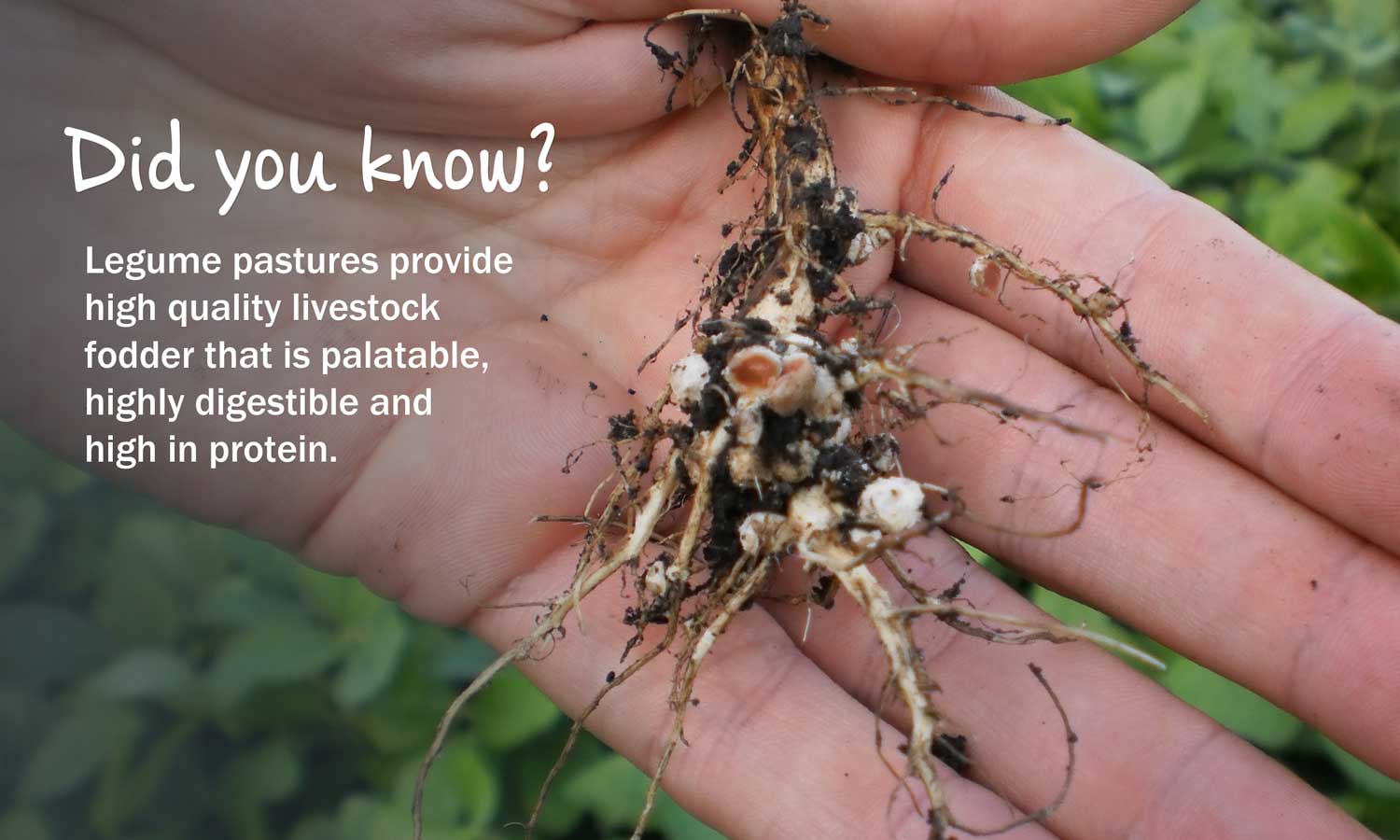The earth’s atmosphere is made up of 78% nitrogen and the symbiotic relationship between legume crops and Rhizobia bacteria acquire, fix and create a storehouse for this nitrogen within nodules on the root system of legumes.
Nitrogen fixation by legumes can be greater than 100-200kg of Nitrogen per hectare per year, so crop rotation including a legume or the inclusion of legumes in pasture can be highly beneficial to increase production. Peanuts, Soybeans, Lucerne and the clover component in pastures are where the minerals and trace elements in rock mineral fertilisers generate quick responses to applications applied either prior to planting or as a top dressing for existing lucerne and pastures.
Remember, the inclusion of a legume in your program does not automatically guarantee maximum nitrogen fixation. Seed inoculation is important, however, nodulation can be reduced in the following conditions:
- Acid soil (pH <5)
- Herbicide residue in soil
- Poor soil nutrition, in particular, low levels of macro and trace minerals
- High levels of nitrogen in soil
- Waterlogged soil
Legumes should have a good number of nodules present and these nodules should be bright pink inside. White nodules may suggest ineffective rhizobia strains, which could result in poor nitrogen fixation.
To download the MLA Fact Sheet for more information on ‘Assessing effective nodulation in legume pastures’ Click Here>
We visit many properties in NSW and QLD and have had many farmers report that “legumes don’t grow on my place like they used to”.
Over decades of farming, minerals and trace elements have leached from soil.The good news is that once NatraMin rock mineral fertiliser is included in the program, legumes start to return in both improved and native pastures. Lucerne growers using NatraMin in their program have reported record production figures as well as longevity of their lucerne stands.
In addition, livestock often have a grazing preference for pasture that has been re-mineralised with NatraMin.
Legume pastures are a high quality source of animal feed that are palatable, highly digestible and high in protein. Many graziers have recognised the huge potential that exists by using Nitrogen-fixing legumes such as lucerne, clover and medics to increase pasture productivity and reduce ongoing costs for Nitrogen inputs. Calcium and Phosphorus are often recognised as important, but let’s not forget Potassium, Sulphur and Silica, and trace elements such as Molybdenum, Copper, Cobalt, Selenium, Zinc and Boron. These are just a few of the wide range of minerals and trace elements in NatraMin, so if you have applied Nitrogen, Super Phosphate or Lime, we recommend that you make NatraMin your next input. When planting, legume and pasture seed can be safely spread with NatraMin.
Increased nodulation on legumes has led to reduced fertiliser costs
“AgSolutions assists us with soil testing and suggested companion planting legumes with our winter and summer forages. Legumes respond well to NatraMin and the prolific number and size of nodules on our cowpeas shows how effectively we are fixing Nitrogen in our soil. We have not used any other fertiliser for our crops since our first companion planting four years ago.” Read More >

Remember, a soil test can save you $$. It is easy to assume that a crop needs NPK but with a soil test, inputs can be tailored, which can often be more cost effective.
Give us a today on 1800 81 57 57 to book in a soil test to ensure the right fertiliser is applied at the right time.
